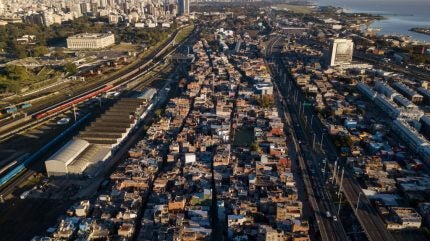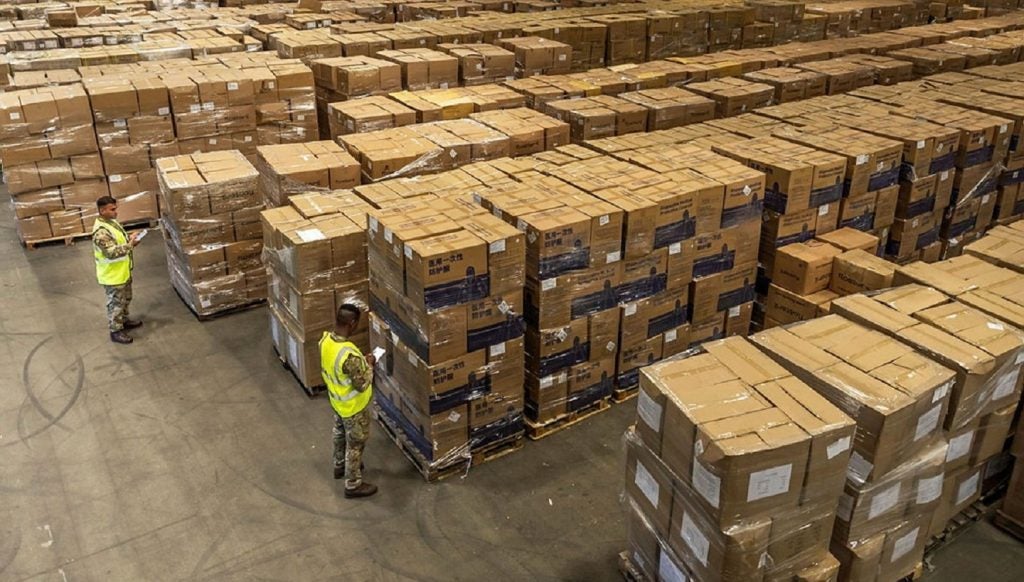

Latin America has had a rotten time since the Covid-19 pandemic struck and what the region requires the most now is rapid economic growth so that it can start to heal some of the wounds.
The region came into the crisis in pretty poor shape. Its economy only expanded by 0.48% a year between 2015 and 2019, according to the International Monetary Fund (IMF). In 2020, its economy plummeted by -7% and is forecast to expand by only 4.6% in 2021 and 3.1% in 2022.
The Latin America and the Caribbean region really requires growth rates north of 6% if the damage wreaked by Covid and the subsequent lockdowns is to be undone, and if millions of people are to be lifted out of poverty. Sadly, deep structural and cultural issues exist that make it difficult for it to fulfil its economic potential.
The region is the second most unequal on the planet after Africa. The top 10% of its richest citizens earn 22 times more than the poorest 10%. This is a big improvement from the ratio of 49 times more in 2000, but it still lags far behind developed economies grouped in the OECD, where the richest 10% earn only nine times more than the poorest 10% (these numbers exclude the Latin American countries in the OECD). In 2019 in Brazil, the income share held by the richest 1% was 28.4%, in Chile 23.7% and in Colombia 20.4%, according to the UN Development Programme. This compares with 12.6% in the UK and 11.2% in France.
The Gini coefficient is a measure of the distribution of income across a population (a coefficient of zero expresses perfect equality while a coefficient of 100 expresses maximal inequality). The average Gini coefficient in Latin America fell from 56 in 2000 but still stood at 51 in 2017, according to the World Bank. A number of Latin American countries have some of the highest coefficients in the world: Brazil 53.9, Honduras 52.1 and Colombia 50.4. In comparison, the equivalent figure in Norway is 27 and in the UK 34.8. South Africa has the highest number in the world with 63.
Why is social mobility in Latin America so poor?
These numbers show just how economically divided Latin American societies are. Social mobility in the region is dire. It is very tough for a working-class child to become a lawyer or an investment banker, for instance. Communities in Latin America are often segregated by socio-economic status. In Brazil, for example, the neighbourhood you live in in a city contributes more than four times in explaining a wage differential than your city or state, according to the Inter-American Development Bank (IDB).
How well do you really know your competitors?
Access the most comprehensive Company Profiles on the market, powered by GlobalData. Save hours of research. Gain competitive edge.

Thank you!
Your download email will arrive shortly
Not ready to buy yet? Download a free sample
We are confident about the unique quality of our Company Profiles. However, we want you to make the most beneficial decision for your business, so we offer a free sample that you can download by submitting the below form
By GlobalDataOther drivers of inequality are gender and race. Women earn $0.87 for every dollar earned by a man, IDB figures state. While deeply rooted social norms exclude women from top executive jobs, they are, on average, three times more likely to work at home than their male partners. Adjusting for education, people of Afro-Caribbean descent earn wages that are on average 17% lower than the rest of the population, while the adjusted wage gap for indigenous people is 27%.
On a visit to Latin America a few years ago, a US investment banker – whose family originated from India – remarked that one of the main reasons why Latin America had seen less economic progress than Asia was racial prejudice – and it is true. It is a lot easier for a European-looking Latin American to progress economically than a darker-skinned one.
Education is another key driver of inequality. High-income individuals in Latin America spend about 25 times more on the education of their children than low-income parents, according to the IDB. More than 40% of secondary enrolments are in private schools, compared with about 10% in OECD countries and middle-income countries in other regions.
High-income individuals in Latin America spend about 25 times more on the education of their children than low-income parents.
These huge inequalities explain many of the social problems in a number of countries in the region. Latin American economies are being held back by classism. Chile, for example, is by some measures the most successful country economically in the region. Its income per head is $14,200 a year compared with $6,700 in Brazil and $9,100 in Argentina, according to the IMF. However, the country is highly divided along social lines. One of the first things that inhabitants of Las Condes, the richest neighbourhood in capital city Santiago, will typically do upon meeting a stranger is to ask them their last name. This helps them to distinguish their social background. Those with aristocratic Spanish or Basque family names have a particular cachet.
An out-of-touch Latin American elite?
At the start of the Covid-19 pandemic in 2020, Jaime Mañalich, Chile’s former minister of health, visited a poorer part of Santiago and said: “There is a level of poverty and overcrowding of which I was not aware.”
His comments are emblematic of a deep problem throughout Latin America: a perception among the poor that the power elite is completely out of touch. The high level of inequality in many ways explains the widespread social unrest in Chile and Colombia during the past two years. In late 2019, a mass protest movement exploded in Chile, triggered by a rise in the price of metro tickets in Santiago, but it soon morphed into a much wider movement, repudiating the high costs of healthcare and the poor funding of education.
It culminated with Chileans heading to the polls for a plebiscite in October 2020. An emphatic 78% of voters opted to draft a new constitution to replace the free market guiding principles imposed by Augusto Pinochet more than 40 years before.
In Colombia, demonstrations began on 28 April this year against a now-withdrawn set of tax reforms, but they quickly escalated into a broad anti-government movement, with hundreds of thousands of people taking to the streets. They too demanded reform of the health and education systems.
The pandemic and lockdowns have, of course, thrown up new winners and losers in the region. About 65% of the households in the bottom 20% of the income distribution experienced at least one job loss among family members one month into the lockdown, according to the IDB. Within the top 20%, the percentage of job losses were about 22%.
Estimates from the World Bank project a jump in extreme poverty in Latin America and the Caribbean from 24% of the population in 2019 to 27.6% in 2020. The World Food Programme estimates a surge of 269% in the number of people in the region facing severe food insecurity. Some 22 million people joined the ranks of the poor, swelling the total number to 209 million, according to the Economic Commission for Latin America and the Caribbean.
Latin America has 107 billionaires
Forbes data shows that the number of billionaires in Latin America jumped to 107 in May 2021 from 76 in March 2020, and their combined net worth shot up to $480bn from $284bn. Notably, about three-quarters of the billionaires in the region are from Brazil and Mexico, as is about 80% of the combined net worth. Many of the new billionaires come from business sectors that have done well during the pandemic and lockdowns: e-commerce, fintech and private healthcare.
Latin America requires a supply-side revolution. Rigidities in the formal labour markets are a terrible problem.
It is very hard to change deep-rooted cultural mores, and ending racial discrimination in Latin America will not come easily. However, structural reforms that could lead to improved social mobility are easier to adopt. It is remarkable that no Latin American economies are placed in the top 50 countries of the World Bank’s Doing Business rankings for 2020. The highest-ranked country is Chile in 59th place, followed by Mexico in 60th. Brazil is placed in 124th spot and Argentina in 126th.
The region requires a supply-side revolution. Rigidities in the formal labour markets are a terrible problem. These make it hard to fire workers but also make it very difficult for employers to hire new staff, meaning that the informal labour market accounts for up to 70% of jobs in many countries. Many Latin American countries also suffer from poor competition laws. All too often a handful of big companies control an industry, squashing out any competition. Duopolies and oligopolies predominate. Many countries are wedded to a dated, statist model that means that inefficient, government-owned companies prevail over private business. Privatisation is a dirty word in Latin America, but many industries require an injection of private capital and would benefit from greater private sector competition.
Many countries have bloated public sectors that create reams of red tape and strangle private entrepreneurship. It takes too long and costs too much to set up a new business. In some countries there are also highly complicated and regressive tax codes that distribute incomes unfairly. It costs way too much to trade across borders, too.
More than anything else, Latin America requires governments that are committed to improving people’s welfare. That means investing in government schools and public healthcare, so that social mobility can improve and inequalities can narrow. All too often governments are corrupt or only want to address the needs of the country’s elite.
Latin America is still reeling from the pandemic and lockdowns. Millions of people have become poorer. However, it is not all bad news. The region is home to some incredibly innovative tech start-ups, for example. The level of tech talent in Buenos Aires, for instance, is phenomenal. This crisis presents an opportunity for the tech savvy. Moreover, the emergency has been so bad that it may force governments to embark on long-delayed structural reform. Those changes are needed if the continent is to reduce inequality and move onto a higher economic growth path.




